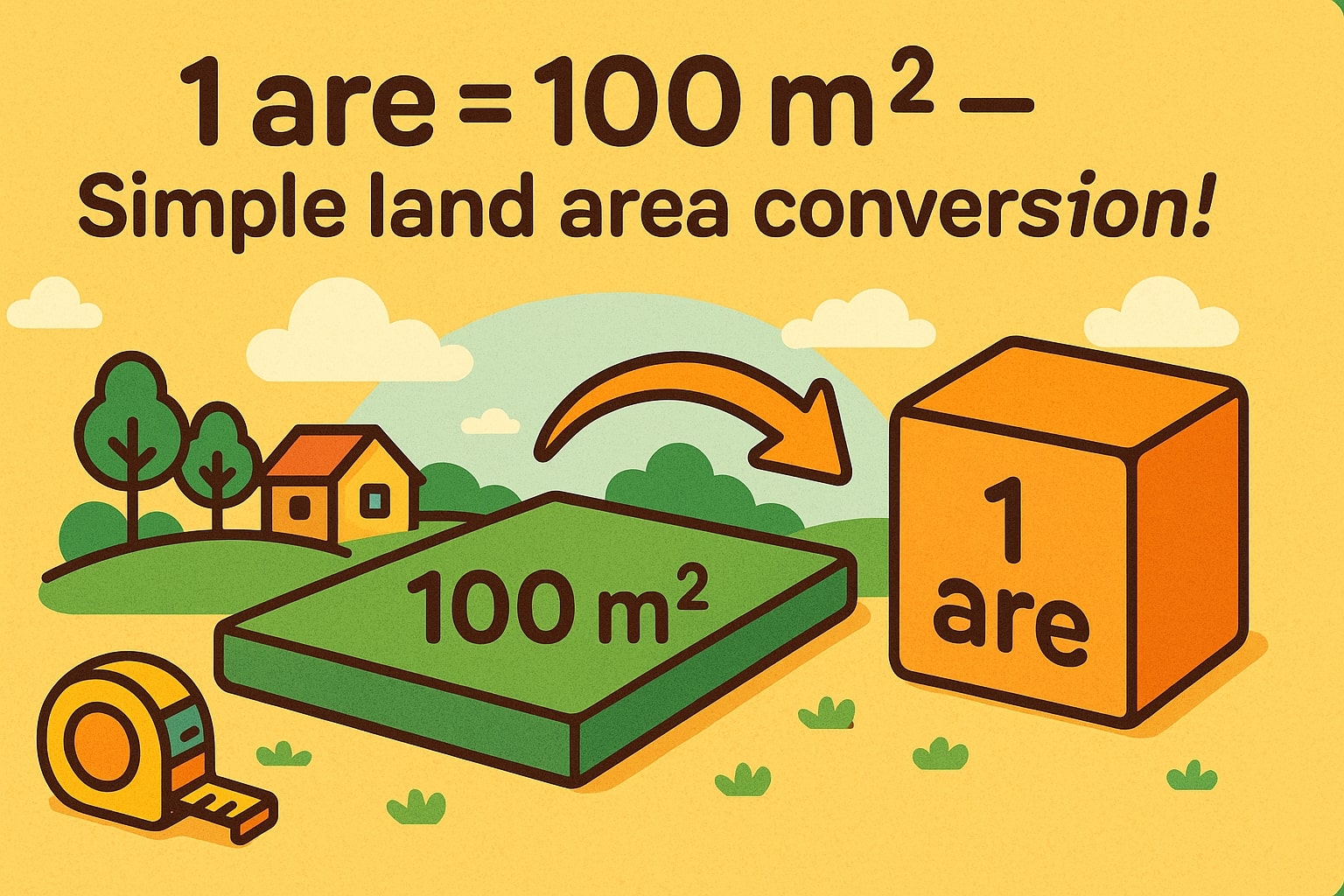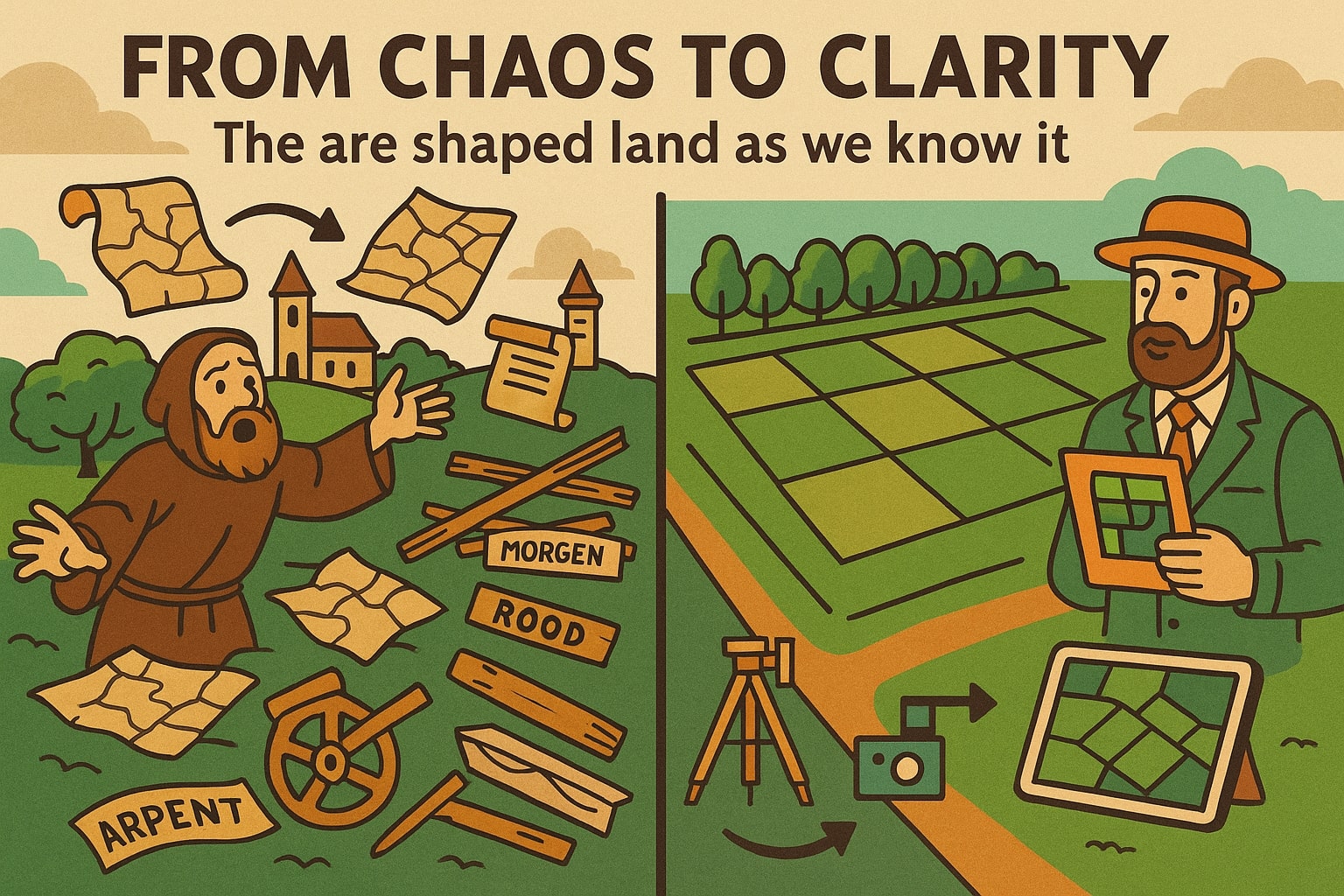square meter to are – How to convert m² to a
If you’re measuring land — whether it’s a backyard garden or a farm plot — there’s a good chance you’ll come across the unit are (a). While less common than square meters (m²), it’s still widely used in land registries, agriculture, and property listings in parts of Europe and Asia. So how do you go from square meters to are? It’s actually simpler than it sounds.

What is a square meter (m²)?
A square meter (m²) is the standard unit for area in the metric system. It’s defined as the area of a square with sides exactly one meter long. You’ll see square meters used to measure:
-
Floor space in real estate listings
-
Plot sizes in architecture and landscaping
-
Room dimensions in interior design
It’s a universal, easy-to-visualize unit that keeps everything simple and scalable.
What is an are (a)?
An are (symbol: a) is a metric unit of area equal to 100 square meters. The are was introduced in the 18th century as part of the original metric system in France, and although it’s not an SI unit today, it’s still recognized and legally used in many countries — especially for measuring land.
One are = 100 m². That makes the hectare (100 ares = 10,000 m²) a natural extension for larger tracts of land, like farms, parks, or forest areas.
In short, think of are as the “hectare’s little cousin” — practical for mid-sized parcels, especially when square meters start feeling a bit too granular.
How to convert square meter to are
This one’s refreshingly simple.
Formula:
are = square meter ÷ 100
That’s it. You’re just grouping 100 square meters into one are.
Example: Convert 450 square meters to are
are = 450 ÷ 100
are = 4.5
So, 450 square meters equals 4.5 ares — a common plot size in suburban zoning plans or community gardens.
Need more conversions like this? Use our Area Converter for instant results, or explore other unit categories in the full list of Conversion tools.
Did you know?
-
The word “are” comes from the Latin area, meaning open space — fitting for a unit used mainly in land measurement.
-
Though not an SI unit, are is officially used in legal land records in countries like France, India, and Indonesia.
-
In Swiss land taxation, property values are still often calculated per are, even for high-altitude mountain plots.
-
The hectare, a much more common metric area unit, is exactly 100 ares — and remains the standard for farms and forests.
-
Land plots for urban housing in Europe often range from 2 to 10 ares — a manageable scale for both homeowners and city planners.
How the are shaped modern land systems
When the metric system was being developed during the French Revolution, measurement wasn’t just about science — it was about reform. The goal? Replace inconsistent feudal units with a universal, rational system. Enter the are, which was adopted in 1795 to standardize land measurement across France.
Before that, land was measured in local units like “arpents,” “morgen,” or “rood,” all of which varied by region. That made taxation, trade, and even neighborly agreements a confusing mess. With the are, 100 square meters became a reliable, repeatable reference, and it quickly became a part of Europe’s agricultural and legal frameworks.
Even after the SI system officially dropped the are in favor of square meters and hectares, the unit stuck around — especially in land registries and deeds. Why? Because saying a plot is “7 ares” is a lot friendlier than “700 square meters” when you’re standing on the grass.
Today, this little-known unit still plays a big role in how land is divided, valued, and sold across the world.

Clear, simple, and still widely used
Converting from square meter to are doesn’t require complicated math:
are = square meter ÷ 100
And while it might feel like an old-fashioned term, are remains relevant in agriculture, real estate, and land law. It fills the gap between tiny square-meter measurements and large-scale hectare discussions.
Whether you're planning a garden or reviewing a property document, this conversion helps translate numbers into meaningful space.
Need another unit check? Visit our Area Converter or explore more from our Conversion tools.

